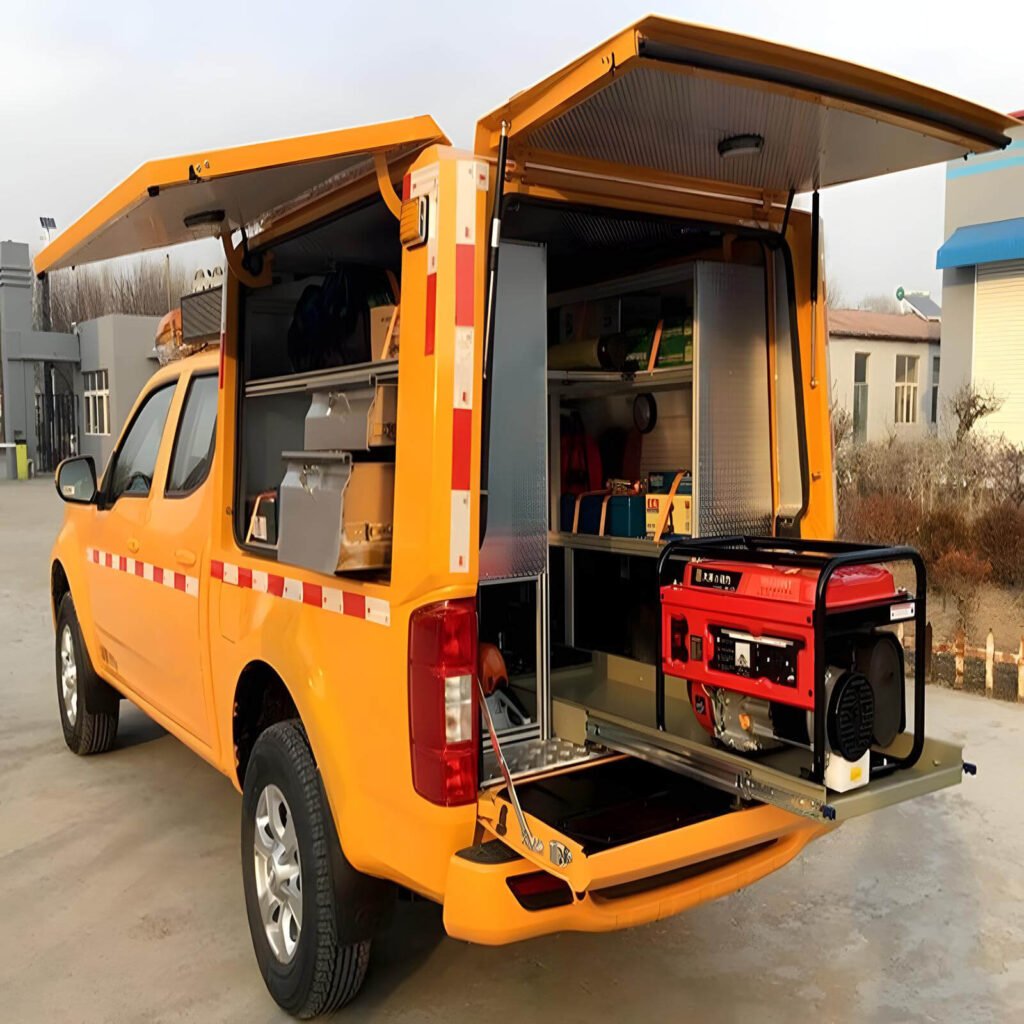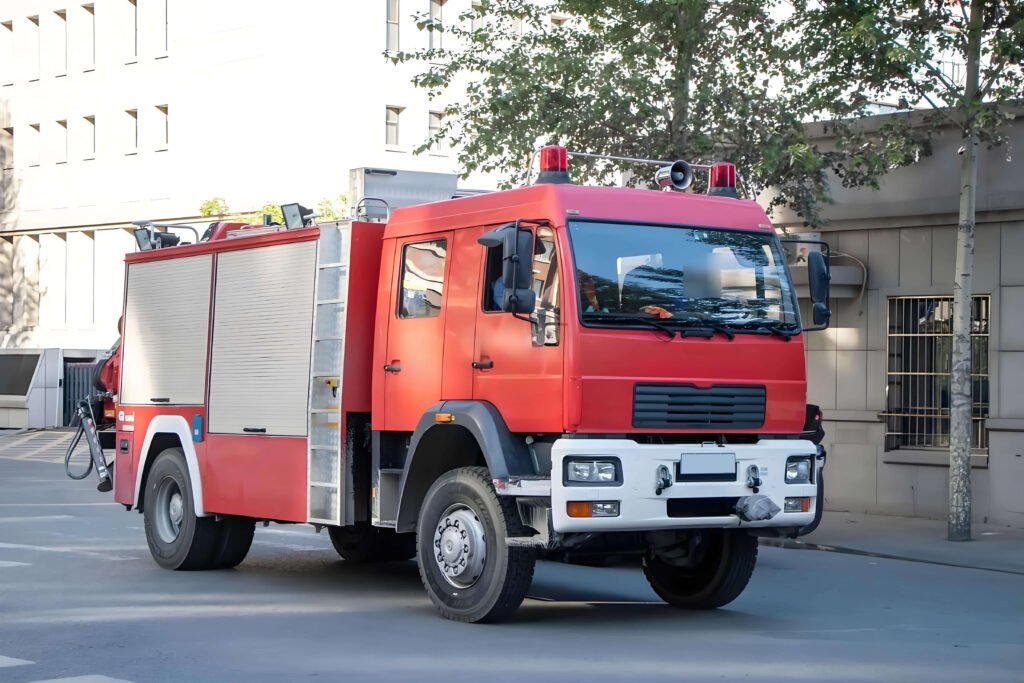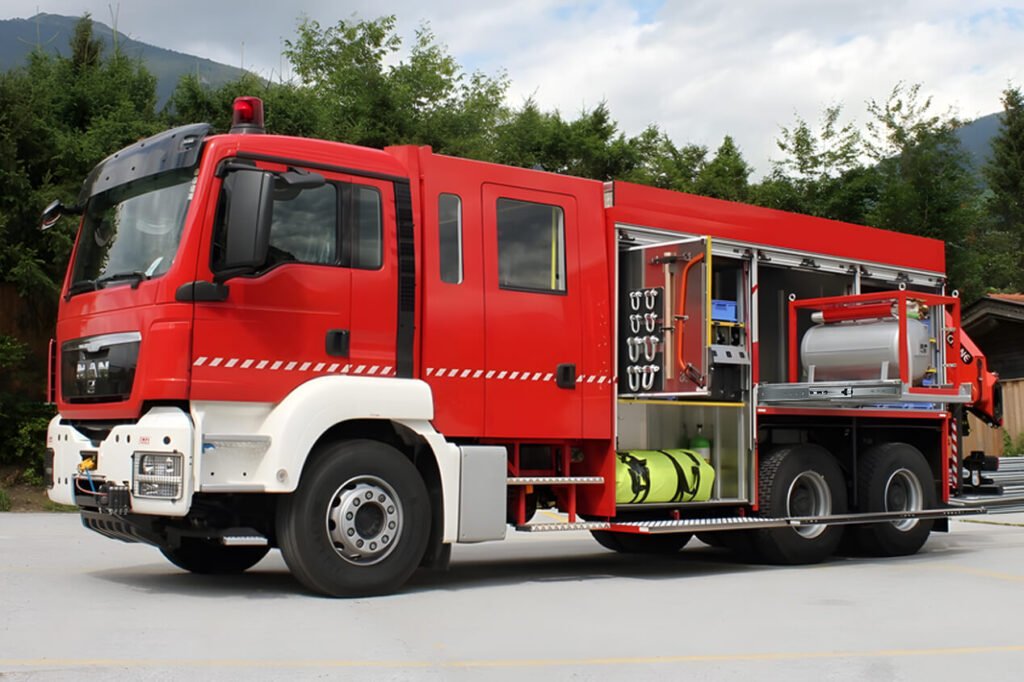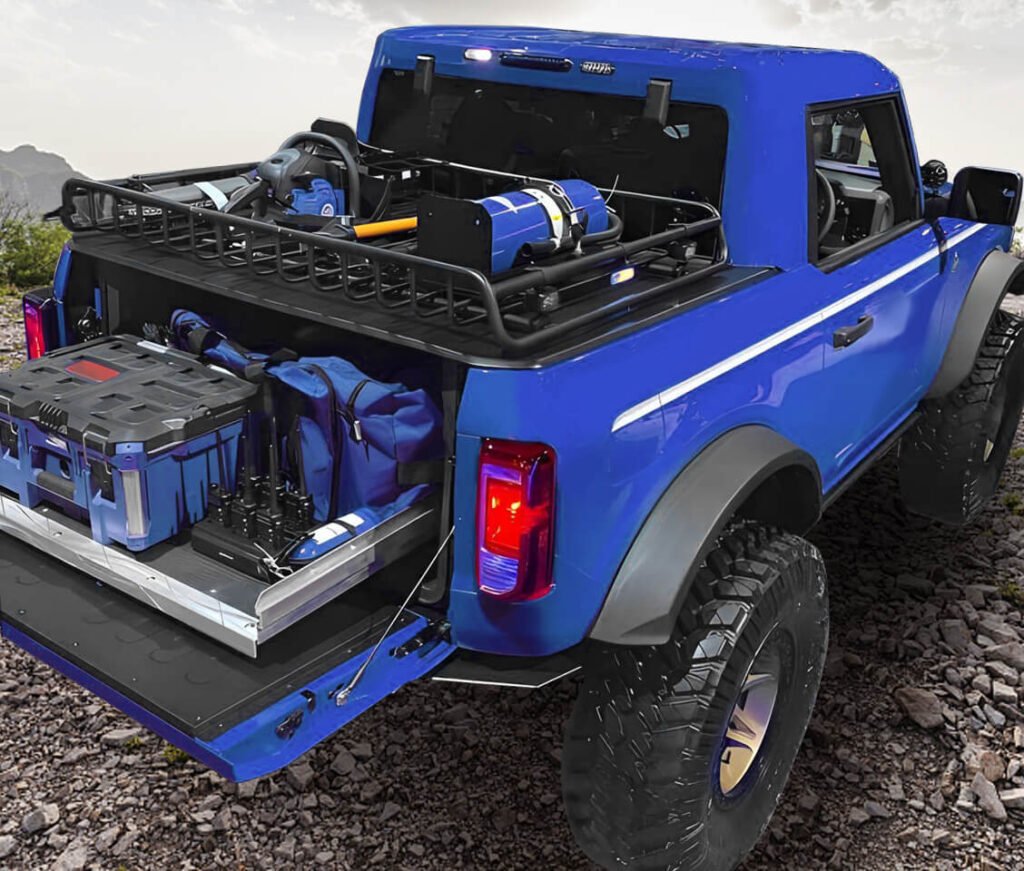In modern emergency rescue operations, the Emergency Vehicle is one of the key tools. The design and configuration of the Emergency Vehicle is directly related to the rescue efficiency and on-site response speed. However, in actual use, many Emergency Vehicles face problems such as chaotic equipment access, insufficient space utilization, and difficult equipment maintenance. These problems not only affect the work efficiency of the Emergency Vehicle, but may also affect the rescue effect in an emergency.
In order to solve these problems, the drawer slide system, as an innovative solution, is being adopted in more and more Emergency Vehicle designs. This article will explore in depth how the drawer slide system can transform the Emergency Vehicle from chaos to order, improve its overall performance, and help procurement personnel make wise decisions.
Basic overview of the drawer slide system
Definition of the drawer slide system
The drawer slide system is an advanced emergency vehicle solution. Its core principle is to install slide rails on both sides of the drawer so that it can slide out and retract smoothly. This design not only simplifies the process of accessing items but also maintains the device’s stability in various conditions. Slide rail systems are used in various applications, including vehicles, workbenches, lockers, and more.
Historical development of drawer slide system
The design history of slide rail systems can be traced back to the early 20th century. With the development of technology, slide rail systems have evolved from simple wooden slide rails to modern high-strength steel slide rails. Early slide-rail systems were mainly used in home and office environments, while modern slide-rail systems are customized and designed according to different usage scenarios, such as applications in rescue vehicles to meet the needs of high-intensity and harsh environments.
Advantages of using drawer slides in rescue vehicles
The application of drawer slides in Emergency Vehicles significantly improves work efficiency and safety. First, the slide rail system allows tools to be quickly pulled out and returned, reducing search time in an emergency. This ability to access quickly is critical to Emergency Vehicles because every second can affect the effectiveness of a rescue.
In addition, the slide rail system can stabilize the equipment when the vehicle is driving or making an emergency stop, preventing tools and equipment from moving inside the vehicle, which reduces the risk of equipment damage and ensures the safety of the Mobile Command Unit during operation.
Through the slide rail system, the space inside the vehicle has been optimized and integrated, allowing items to be stored according to type and function, further improving the smoothness and organization of the work process. This efficient management not only improves the overall performance of the Emergency Vehicle but also ensures that tasks can be completed quickly and effectively in emergencies.

The main advantages of the drawer slide system
Improve storage and access efficiency
During the emergency rescue, time is life. Traditional storage methods often require rescuers to open multiple boxes or drawers for tedious searches, which not only wastes time but also may cause unnecessary confusion. The drawer slide system allows the equipment to slide out and return smoothly in the vehicle, and the Mobile Command Unit can quickly find the required Rescue Equipment or tools, greatly improving storage and access efficiency. This efficient storage and access method ensures that rescuers can respond quickly at critical moments and improve the rescue effect.
Optimize space utilization
Emergency Vehicle has limited internal space, and how to effectively use this space is a major challenge in design. The flexible configuration of the drawer slide system maximizes the use of the space in the vehicle. Through customized design, drawers of different sizes and functions can meet the storage needs of various equipment. Tools, medical equipment, emergency Rescue Equipment, etc. can be classified and stored according to their functions. This orderly management method not only improves space utilization but also avoids confusion of items, ensuring that each item can be found quickly when needed.
Enhanced safety
Emergency Vehicle is extremely important in extreme conditions such as sharp turns and bumps. The design of the slide rail system can effectively prevent the equipment from moving in the vehicle, reducing the risk of equipment damage and personal injury. The slide rail system usually adopts durable materials and seismic design to ensure stability in various harsh environments. This stability not only ensures the safety of the equipment but also protects the operating safety of the rescue personnel, avoiding unexpected situations caused by equipment displacement.
Simplified maintenance and cleaning
The design of the slide rail system takes into account the need for easy maintenance and cleaning. The structure of the drawer and slide rail allows users to easily perform daily cleaning and regular maintenance. This convenient maintenance method not only helps to keep the equipment in good condition but also extends the service life of the slide rail system. The easy-to-clean design reduces the dead corners that are difficult to reach in traditional rescue equipment storage systems, ensuring the reliability of the equipment after long-term use.
Improve the smoothness of the workflow
The drawer slide rail system not only improves the efficiency of rescue equipment storage and access but also optimizes the entire workflow. In the rescue vehicle, the orderly storage of equipment allows rescue personnel to work according to standard operating procedures, reducing operational errors caused by confusion of items. By designing a drawer system with different functional areas, rescuers can quickly find the items they need and ensure a smooth workflow. This efficient workflow improves the overall performance of the rescue vehicle and increases the success rate of the rescue mission.

Design and implementation of drawer slide system
Design points
When designing a drawer slide system, multiple factors need to be considered to ensure that it can perform optimally in the rescue vehicle. Here are some key points in the design process:
Requirement analysis: Conduct a detailed analysis of the interior space and equipment requirements of the rescue vehicle to determine the design parameters of the slide system. This includes the size of the drawer, the material and configuration of the slide, etc.
System design: Design a suitable slide system based on the results of the demand analysis. The design should include the size of the drawer, the material of the slide, and the layout of the storage area. The storage requirements of different equipment should be considered to design a flexible storage solution.
Material selection: Select high-strength and durable materials such as steel or aluminum alloy to ensure that the slide system can withstand vibration and impact in the vehicle. At the same time, the material should be corrosion-resistant and adaptable to various environmental conditions.
Durability testing: After the design is completed, durability testing is carried out to ensure the stability and reliability of the slide system in actual use. This includes simulating vibration and impact tests in the vehicle to ensure that the system can operate stably for a long time.
Implementation steps
The implementation process of integrating the drawer slide system into the rescue vehicle includes the following steps:
Requirement analysis: First, a detailed analysis of the internal space and equipment requirements of the rescue vehicle is required to determine the design parameters of the slide system.
System design: Based on the results of the demand analysis, a suitable slide system is designed, including the size of the drawer, the material of the slide, and the layout of the storage area.
Installation and commissioning: Install the slide system in the rescue vehicle and debug it to ensure the smoothness of the slide and the stability of the equipment.
Training and maintenance: Train the operators of the rescue vehicle to ensure that they are proficient in using the slide system, and provide regular maintenance and cleaning instructions.
Analysis of the economic benefits of drawer slides to emergency vehicles
In the design and procurement of emergency vehicles, the trade-off between cost and benefit is crucial. The introduction of advanced equipment management systems, such as drawer slide systems, can not only improve operational efficiency, but also significantly affect economic benefits.
AOLISHENG will provide you with a detailed analysis of the return on investment of the drawer slide system, including its initial cost, long-term savings and other economic benefits. It will demonstrate its significant economic advantages through specific figures and actual cases to help purchasers make informed decisions.
Initial investment cost analysis
Purchase cost of drawer slides
The initial investment of introducing a drawer slide system mainly includes the purchase cost and installation cost of the system. According to market research, the price of high-quality drawer slides is usually between $77 and $230 per set. The specific price varies depending on the size, material and degree of customization of the drawer slides. If you purchase in bulk, you will not only get a lower quote, but also get a customized slide matching solution based on your needs.
Generally speaking, our drawer slides are not difficult to install. You can choose to install them yourself. If you want to find a professional to install them, there will be some installation costs. The installation cost depends on the complexity of the place you need to install.
Example: For a standard rescue vehicle, the total cost of fully installing a set of drawer slide systems (8 pairs) is about $2,000. This cost includes the purchase, installation and commissioning of the system.
Comparison of the cost of traditional storage solutions
Compared with traditional storage solutions, the initial cost of the slide system may be slightly higher. However, traditional systems often require more maintenance and replacement costs. Compared with traditional equipment management systems (such as fixed racks and open lockers), the initial investment is usually lower than that of slide rail systems, but in the long term, additional costs may be incurred due to equipment damage and inefficiency.

Economic Benefit Analysis
Economic Benefit of Time Saving
The drawer slide rail system can significantly improve the efficiency of equipment storage and retrieval, which directly affects the speed of rescue operations. In an emergency, every minute saved can bring significant results. By using the slide rail system, rescue personnel can quickly locate and extract the required tools, reducing operation time.
Case data: According to data from a city fire department, after the introduction of the slide rail system, the equipment storage and retrieval time was reduced from an average of 10 minutes to 3 minutes. This improvement reduced the total time of each emergency response by 7 minutes. In multiple emergency responses each year, the accumulated economic benefits of this time saving significantly improved the overall efficiency of the rescue vehicle.
Reduced maintenance costs
The high durability and low maintenance requirements of the slide rail system make its long-term maintenance costs much lower than traditional storage solutions. Traditional storage systems often require regular maintenance and replacement of parts due to their fixed design and poor protection performance. The slide rail system reduces maintenance requirements through design optimization.
Data analysis: Taking a medical emergency vehicle as an example, after the introduction of the slide rail system, the maintenance frequency of the system was reduced by 30%. This not only reduces the workload of maintenance personnel, but also reduces maintenance costs. The estimated annual maintenance cost savings are about $1,000.
Reduction in equipment damage rate
The stable design of the drawer slide rail system can effectively prevent equipment from being damaged during transportation. Compared with traditional storage methods, the slide rail system can better fix the equipment and reduce damage caused by vibration in the vehicle.
Case data: In the actual use of a fire truck, the equipment damage rate was reduced by 40% after the introduction of the slide rail system. This means that the equipment needs to be replaced and repaired less, thereby reducing long-term operating costs. The cost savings brought by the reduction in equipment damage rate is about $2,000 per year.
Calculation of Return on Investment (ROI)
Calculation Method of Return on Investment
Return on Investment (ROI) is an important indicator for evaluating investment benefits. The calculation formula of ROI is:
In the case of drawer slide system, the total benefit includes the benefits brought by time saving, the reduction of maintenance costs and the cost savings brought by the reduction of equipment damage rate.
ROI calculation example
Take a rescue vehicle as an example, the initial investment is $3,500. Assume that the time saved by the slide system brings an economic benefit of $5,000 per year, the savings from reduced maintenance costs are $1,000, and the savings from reduced equipment damage rate are $2,000. The total benefit is $8,000.
ROI calculation:
This means that the return on investment of introducing a drawer slide system is 128.6%, showing that the investment can achieve a significant return in the short term. If you buy AOLISHENG slides in bulk, you can not only get a lower price, but also get more durable and better quality drawer slides. Contact us and let us start serving you!
Actual Case Analysis
Case 1: City Fire Department
A city fire department introduced a drawer slide system for its rescue vehicle. Before the introduction of the slide system, firefighters often had to find the required equipment in a messy toolbox in an emergency, resulting in delayed response time. After the optimization of the slide system, the storage and access of tools and equipment became orderly. Each equipment has its fixed position, and firefighters can find the required items in the shortest time, greatly improving work efficiency and rescue results.
Case data analysis
Reduced response time: After the introduction of the slide system, the equipment access time was shortened from an average of 10 minutes to 3 minutes.
Reduced equipment damage rate: Due to the stability of the slide system, the damage rate of equipment was reduced by 40%.
Reduced operating errors: Classified storage of equipment reduced the incidence of operating errors and increased the success rate of rescue missions.

Case 2: Medical emergency vehicle
Another medical emergency service agency installed a drawer slide system on its Rescue Vehicle to optimize the storage and access of medical equipment. The medical equipment in the emergency vehicle is effectively classified and stored through the slide system, and emergency personnel can quickly find the required equipment in an emergency. The introduction of the slide rail system not only improves the operating efficiency of the Rescue Vehicle, but also improves the maintenance management of medical equipment.
Case data analysis
Improved equipment access efficiency: Equipment access time was reduced by 50%, from an average of 5 minutes to 2.5 minutes.
Reduced maintenance frequency: Due to the stable storage of equipment, the maintenance frequency was reduced by 30%.
Improved first aid effect: The rapid access to medical equipment improves the first aid effect, increasing the success rate of first aid by 25%.
Future Outlook
With the advancement of technology and innovation in design, the application of drawer slide rail systems in rescue vehicles will become more and more extensive. In the future, the slide rail system may combine intelligent technology to achieve automatic access and intelligent management. The following are possible future development directions:
Intelligent slide rail system
The future slide rail system may integrate intelligent technology to achieve automatic access. For example, through the Internet of Things technology, the slide rail system can monitor the status of the equipment in real time, provide equipment usage data and maintenance suggestions. This intelligent management method will further improve the work efficiency and management level of the rescue vehicle.
Modular design
The modular design will make the installation and maintenance of the slide rail system more flexible. Through modular components, users can configure and adjust according to actual needs to meet the needs of different tasks. This design will improve the adaptability and scalability of the slide rail system, making it adaptable to various types of rescue vehicles.
Environmentally friendly materials
Future slide rail systems may use more environmentally friendly materials to reduce the impact on the environment. By adopting recyclable and sustainable materials, the slide rail system will not only improve performance, but also meet environmental protection requirements and contribute to sustainable development.
Conclusion
From chaos to order, drawer slide systems are leading a new trend in emergency vehicle equipment management. Slide rail systems improve the performance of emergency vehicles by increasing access efficiency, optimizing space utilization, enhancing safety, simplifying maintenance and cleaning, and streamlining workflow.
At critical moments of emergency rescue, efficient equipment management can significantly improve the rescue effect and provide strong support for rescue personnel. For purchasers, introducing a drawer slide system is not only a wise choice to improve equipment management, but also an important investment to ensure the efficient operation of emergency vehicles.
See more about Heavy Duty Drawer Slides

